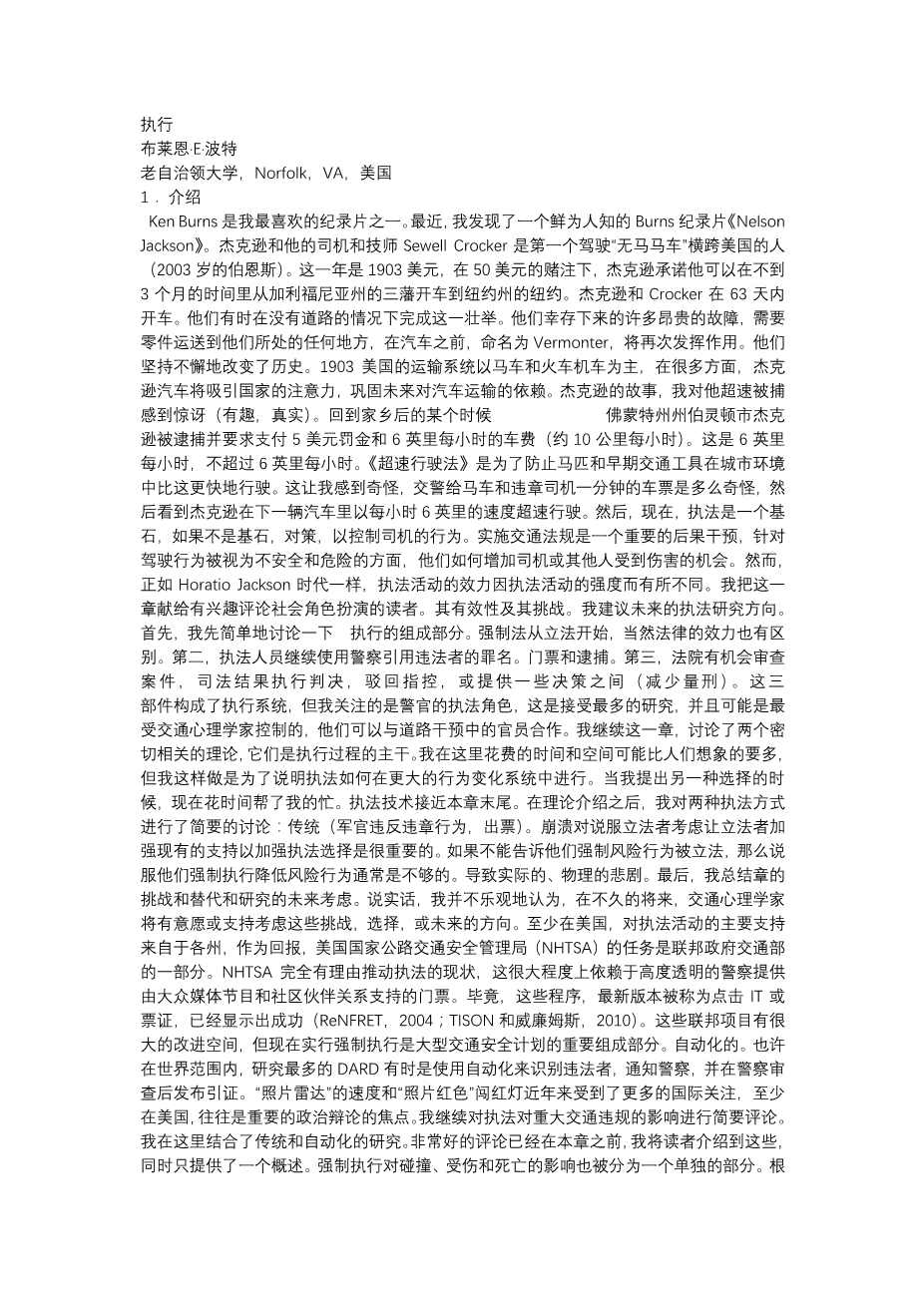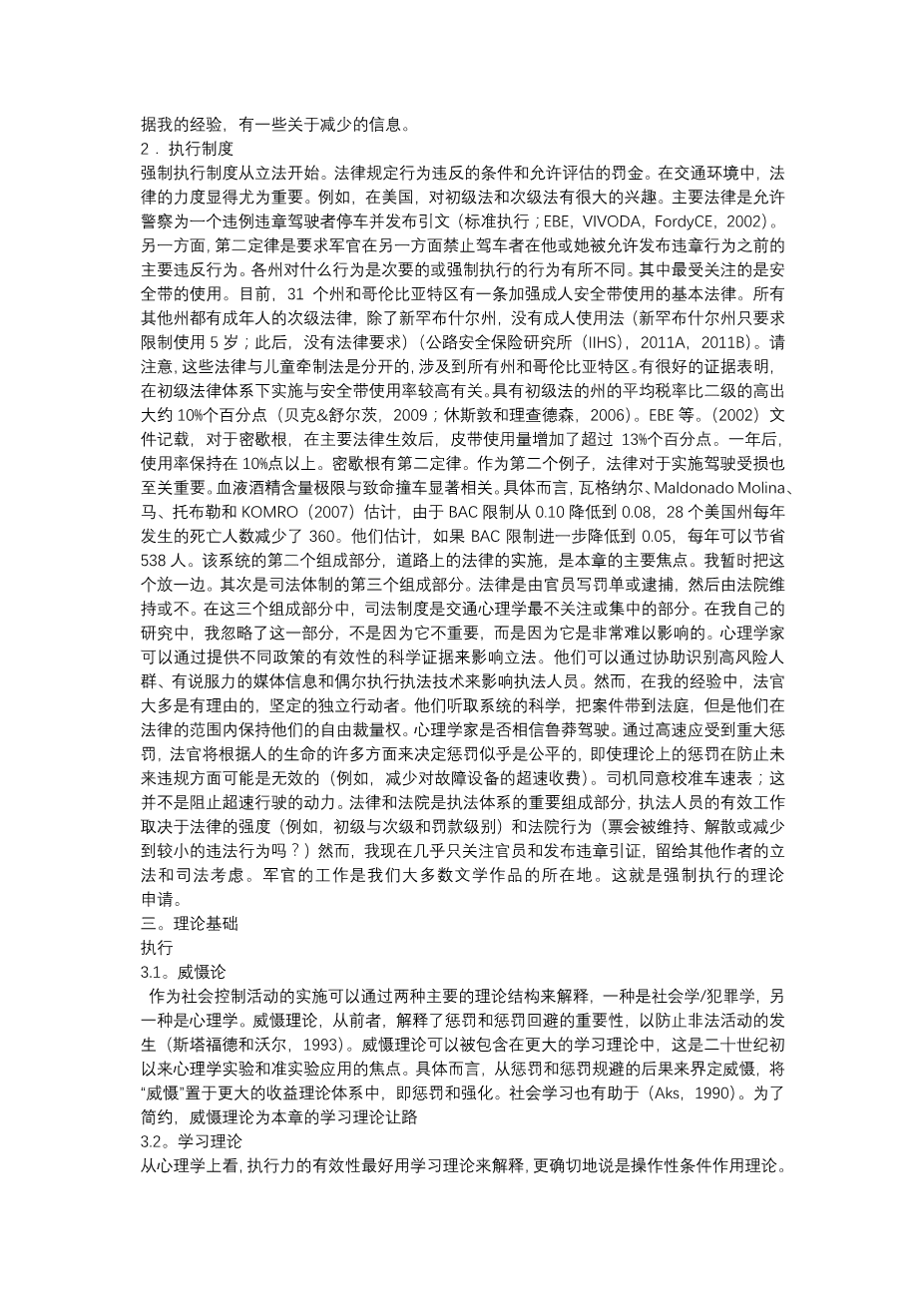Enforcement Bryan E. Porter Old Dominion University, Norfolk, VA, USA 1. INTRODUCTION Ken Burns is one of my favorite documentarians. Recently, I discovered a lesser known Burns’ documentary profiling Horatio Nelson Jackson. Jackson and his driver and mechanic, Sewell Crocker, were the first to drive “the horseless carriage” across the United States (Burns, 2003). The year was 1903, and on a $50 wager, Jackson promised he could drive from San Francisco, California, to New York City, New York, in less than 3 months. Jackson and Crocker made the drive in 63 days. They accomplished this feat at times without roads to drive on. They survived numerous and costly breakdowns that required parts to be shipped to wherever they happened to be before the automobile, named the Vermonter, would function again. They persevered and changed history. The United States’ transportation system in 1903 was dominated by horse-drawn carriages and train locomotives. Due in many ways to Jackson, the automobile would capture the country’s attention and solidify the future’s reliance on automobile transportation. In addition to being fascinated with Jackson’s tale, I was surprised (and amused, truthfully) about his arrest for speeding. Sometime after returning to his home town of Burlington, Vermont, Jackson was arrested and required to pay a $5 fine and court costs for driving 6 mph (approximately 10 kph). This was 6 mph itself, not 6 mph over the limit. The speeding law was written to prevent horses and earlier forms of transportation from moving faster than this in an urban environment. It made me wonder how strange it must have been for traffic police to give tickets for horseand-carriage violators one minute and then see Jackson speeding by at 6 mph in an automobile the next. Then, as now, enforcement is a cornerstone, if not the cornerstone, countermeasure to control driver behavior. Enforcing traffic laws is an important consequence intervention targeting driving behaviors deemed unsafe and risky in terms of how they increase the chances for the driver or others to be harmed. Yet, just as in Horatio Jackson’s time, enforcement’s effectiveness varies by the strength of the law enforcement activities. I offer this chapter to readers interested in reviewing the role enforcement plays in society, both its effectiveness and its challenges. I suggest future directions for enforcement studies. First, however, I open with a brief discussion of the components of enforcement. Enforcement begins with legislation, and it is certainly true that the strength of the law makes a difference. Second, enforcement continues with police officers using the law to cite violators with tickets and arrests. Third, courts have opportunities to review cases, with judicial outcomes carrying out the sentences, dismissing the charges, or providing some decision in between (reduced sentencing). These three components make up the enforcement system, but I focus on the officer enforcement role, which has received the most study and is probably the most controlled by traffic psychologists, who can partner with officers in roadway interventions. I continue the chapter with a discussion of the two theoriesdclosely relateddthat are the backbone of the enforcement process. I spend more time and space here than perhaps one would think, but I do so to show how enforcement fits within a larger system of behavior change. Taking time now actually helps me when I suggest an alternative enforcement technique near the end of the chapter. After the theoretical introduction, I proceed with a brief discussion of two types of law enforcement: traditional (officer pulling a violator over to issue a ticket) versus automated. Perhaps the most studieddand sometimes contesteddarea of enforcement throughout the world is the use of automation to identify violators, notify police, and issue citations after police review. “Photo radar” for speed and “photo red” for red light running have received more international attention in recent years and, at least in the United States, are often the focus of significant political debate. I continue with brief reviews of enforcement’s impact on key traffic violations. I combine traditional and automated research here. Very good reviews have preceded this chapter, and I refer readers to these while providing only an overview. The impact of enforcement on crashes, injuries, and fatalities is considered in a separate section, too. In my experience, having some information about reductions in crashes is important for convincing lawmakers to consider making lawsdor strengthening existing onesdto enhance enforcement options. Persuading them that enforcement reduces a risk behavior is often insufficient if one cannot show them that the risk behavior to be legislated against
leads to actual, physical tragedy. Finally, I conclude the chapter with challenges to enforcement and future considerations for alternatives and research. To be truthful, I do not have much optimism that, in the immediate future, traffic psychologists will have the will or the support to consider empirically these challenges, alternatives, or future directions. At least in the United States, the dominant support for enforcement activities comes from the states, which in return receive mandates from the National Highway Traffic Safety Administration (NHTSA), part of the federal government’s Department of Transportation. NHTSA has every reason to push the status quo in enforcement, which is heavily dependent on highly visible police giving tickets supported by mass media programming and community partnerships. After all, such programs, with the latest edition known as Click It or Ticket, have shown success (Reinfurt, 2004; Tison amp; Williams, 2010). These federal programs have significant room for improvement, but for now ticket-giving enforcement is a key component of large-scale, traffic safety programs.
2. THE ENFORCEMENT SYSTEM
The enforce
剩余内容已隐藏,支付完成后下载完整资料


英语译文共 6 页,剩余内容已隐藏,支付完成后下载完整资料
资料编号:[464639],资料为PDF文档或Word文档,PDF文档可免费转换为Word
以上是毕业论文外文翻译,课题毕业论文、任务书、文献综述、开题报告、程序设计、图纸设计等资料可联系客服协助查找。


